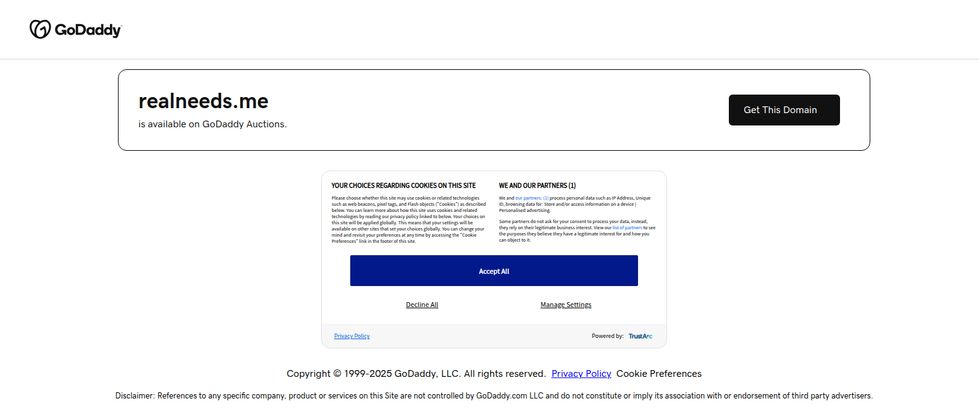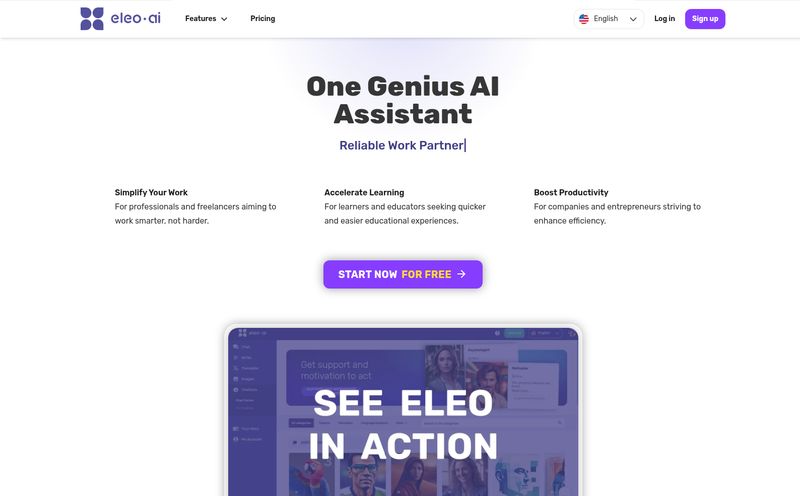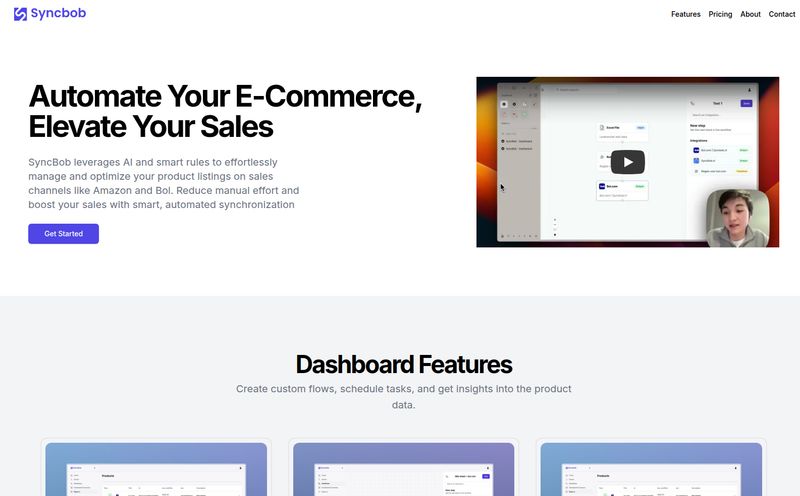Finding Your Next Big Idea in a Sea of Keywords
As an SEO pro, I've spent more hours of my life staring at keyword export spreadsheets than I'd care to admit. It's a rite of passage. You're hunting for those golden nuggets—the low-competition phrases with high-intent that signal a desperate need. It’s part data science, part digital archaeology. You’re looking for patterns, for the ghost of a problem people are trying to solve.
It's the same exact feeling for entrepreneurs. You have an idea, you think it's brilliant. But is it? Are people actually searching for a solution you can provide, or are you just building something for an audience of one? The fear of launching to the sound of crickets is real, folks. I've seen it happen.
So, when I stumbled upon a tool called RealNeedsAI, my interest was definitely piqued. The promise was simple and powerful: use AI to analyze search data and validate user needs, fast. It’s meant to be a shortcut through that painful, eye-watering spreadsheet phase. A way to build your startup with the confidence that you’re solving a genuine problem. A fantastic concept, right? But as I started digging, I found a bit of a mystery.
What Was RealNeedsAI Meant To Be?
At its core, RealNeedsAI was designed to be a truth serum for startup ideas. The concept was to take the raw, messy keyword data we all get from industry giants like Semrush or Ahrefs and make it... make sense. Not just in a list, but in a way that reveals the underlying needs of the searchers.
Instead of you manually grouping keywords like “how to fix a leaky faucet,” “plumber near me,” and “cost to repair pipe,” the AI would theoretically cluster these together under the user need: “Urgent Plumbing Repair.” It’s about moving from keywords to concepts. From what people type, to what they truly want. This is the kind of analysis that can save a founder months of wasted effort and thousands of dollars building the wrong thing.

Visit RealNeedsAI
The AI-Powered Keyword Interpreter
The main engine behind this was, of course, artificial intelligence. The plans mentioned using both GPT-3.5 Turbo and the much more capable GPT-4o. This is a significant detail. Using a powerful model like GPT-4o suggests they were serious about getting deep, accurate interpretations of search intent. It's the difference between a simple categorization and a more insightful analysis that understands context and subtlety. This isn't just about grouping words; it's about understanding the human emotion and urgency behind them.
Visualizing Demand Before You Build
The other big piece of the puzzle was the data visualization. The platform promised to take all this analyzed data and present it in a clean, easy-to-read chart. Anyone who has tried to make a pivot table in Excel to show keyword opportunities to a non-SEO person knows how valuable this is. A simple, clear visual that says, “Look, tons of people are searching for this problem, and very few are searching for that one,” is infinitely more powerful than a spreadsheet with 10,000 rows. It helps you see the forest for the trees, spotting the biggest fires you can put out for your future customers.
The Good, The Bad, and The Complicated
Every tool has its strong points and its hiccups. Based on what RealNeedsAI was putting forward, here’s my take on the concept.
The Potential Upsides
The speed is the first obvious win. Manually clustering keywords is a chore, period. Automating it saves a ton of time. More importantly, it offers a data-driven foundation for business decisions. Gut feelings are great, but data pays the bills. Building a product or a content strategy based on validated search demand dramatically increases your chances of success. I’ve always believed that the best ideas live at the intersection of your passion and what people are actively looking for. This tool aimed to be a map to that exact spot.
Some Practical Concerns
On the flip side, the model had a few dependencies that gave me pause. First, you had to bring your own data. The reliance on a Semrush or Ahrefs subscription means RealNeedsAI was an add-on, not a standalone solution. For a bootstrapped founder, paying for two tools right out of the gate can be a tough pill to swallow. Second, the no-refunds policy on credits is a bit of a red flag. While I get it from a business perspective (they have to pay for the AI processing), it puts all the risk on the user. You better hope your keyword export is clean before you hit that “analyze” button.
A Look at the Proposed Pricing
The pricing structure seemed pretty straightforward and catered to different user levels. It was a classic tiered system based on usage and the power of the AI model.
- Starter Plan: For $29 a month, you'd get 1,000 keyword credits processed by the GPT-3.5 Turbo model. This seems perfect for a solopreneur or someone just testing an idea or two.
- Professional Plan: This jumped to $49 a month for the same 1,000 keyword credits, but with a huge upgrade to the GPT-4o model. They claimed it was a 10x performance boost, and honestly, having used both models extensively, that's not an exaggeration. This felt like the sweet spot for serious founders and small agencies.
- Ultra Plan: At $99 a month, you got 5,000 keyword credits with the GPT-4o model. This was clearly aimed at power users, SEO agencies, or serial entrepreneurs juggling multiple projects.
All plans included the integrations and the online dashboard, so the primary differences were credit volume and AI quality. A fair model, in my opinion.
The Elephant in the Room: Is RealNeedsAI a Ghost Ship?
So, here’s the kicker. After getting all excited about the concept, I went to check out the site, `realneeds.me`. And I was greeted by a GoDaddy Auctions page. Yep, the domain is up for sale. This throws a massive wrench in the works, doesn't it?
What does this mean? Well, it could mean a few things. The project might have been abandoned before it truly took off. The founders could have run out of steam, or funding, or both—a common tale in the startup world. It's also possible they pivoted to a new idea and a new brand, letting the old domain lapse. Or maybe it's just a massive oversight, though that seems unlikely for a tech company. The pricing page link I found is, as you might expect, dead.
It's a bit of a letdown, I gotta admit. The idea behind RealNeedsAI is solid. Genuinely solid. It addresses a very real pain point that I and many others in the marketing and startup communities face every day. It’s a shame to see a great concept seemingly turn into a digital ghost ship. It serves as a stark reminder that a great idea is only one part of the equation; execution and longevity are the other, harder parts.
Frequently Asked Questions
What was the main purpose of RealNeedsAI?
RealNeedsAI was designed to help entrepreneurs and marketers validate their ideas by analyzing keyword data from Google searches. It used AI to identify and cluster real user needs from search queries, providing a data-driven basis for building products or creating content.
Did you need other tools to use RealNeedsAI?
Yes, its functionality was dependent on you providing your own data. Users needed to export keyword reports from other major SEO platforms like Semrush or Ahrefs and then upload them to RealNeedsAI for analysis.
What made RealNeedsAI different from just looking at a keyword list?
The key difference was its AI-powered analysis and visualization. Instead of just listing keywords, it aimed to interpret the intent behind them, grouping them into actual human needs. The chart-based dashboard was meant to make these opportunities much easier to spot than in a raw spreadsheet.
Why do you think the `realneeds.me` domain is for sale?
While I can't know for sure, it most often indicates that a project has been discontinued. The founders may have moved on, the business may have been unsuccessful, or they might have rebranded. In any case, it strongly suggests the service as it was described is no longer active.
Are there good alternatives to what RealNeedsAI promised?
Absolutely. While a direct one-to-one replacement might be hard to find, you can replicate the process. Tools like Keyword Insights or ZenTask offer AI-powered keyword clustering. You can also perform this analysis manually using a combination of Semrush/Ahrefs, Google Sheets, and a bit of elbow grease. The need it addressed is real, so other solutions definitely exist.
A Great Idea in Search of a Home
So, where does that leave us? RealNeedsAI stands as a fantastic concept, a brilliant answer to the question, “What should I build next?” It represents a smarter, faster way to approach market research in the digital age. It’s a tool I genuinely wish was fully functional and thriving today.
The fact that its domain is now sitting on an auction site is a cautionary tale. But it doesn't invalidate the idea. The need to understand user intent from search data is more pressing than ever. Whether it's through another tool or by honing our own analytical skills, the core principle of RealNeedsAI—listening to what people are asking for—remains the absolute best way to start anything meaningful online.
Reference and Sources
- Semrush: https://www.semrush.com/
- Ahrefs: https://ahrefs.com/
- Archived RealNeedsAI Pricing Information: https://realneeds.me/#pricing (Note: Link is inactive)
- Alternative Tool - Keyword Insights: https://keywordinsights.ai/
- Alternative Tool - ZenTask: https://www.zentask.com/keyword-clustering



